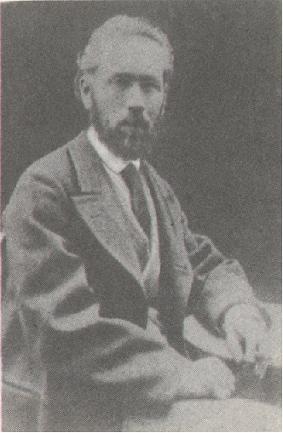Eduard Langer: Difference between revisions
m (1 revision imported) |
No edit summary |
||
| (2 intermediate revisions by 2 users not shown) | |||
| Line 7: | Line 7: | ||
==Dedications== | ==Dedications== | ||
In 1873 Tchaikovsky dedicated | In 1873, Tchaikovsky dedicated his piano piece ''Capriccioso'' — No. 5 of the [[Six Pieces, Op. 19]] — "à M. Edouard Langer". | ||
==Correspondence with Tchaikovsky== | ==Correspondence with Tchaikovsky== | ||
| Line 13: | Line 13: | ||
* [[Letter 1464a]] – 1/13 April 1880, from [[Saint Petersburg]] | * [[Letter 1464a]] – 1/13 April 1880, from [[Saint Petersburg]] | ||
* '''[[Letter 1575]]''' – 1/13 September 1880, from [[Kamenka]] | * '''[[Letter 1575]]''' – 1/13 September 1880, from [[Kamenka]] | ||
==External Links== | |||
* [[wikipedia:ru:Лангер,_Эдуард_Леопольдович|Wikipedia]] (Russian) | |||
* {{IMSLP|Langer,_Eduard}} | |||
* {{viaf|50092303}} | |||
[[Category:People|Langer, Eduard]] | [[Category:People|Langer, Eduard]] | ||
Latest revision as of 19:53, 2 September 2023
Russian pianist and teacher (b. 21 April/3 May 1835 in Moscow; d. 24 April/7 May 1905 in Moscow), born Eduard Leopoldovich Langer (Эдуард Леопольдович Лангер); also known as Eduard Leontyevich Langer (Эдуард Леонтьевич Лангер), or Edward Langer.
He was the son of Leopold Langer (1802–1885), a German organist, composer and teacher, who moved to Moscow in the 1820s. In 1860 Eduard began teaching piano classes in Moscow. He joined the staff of the Moscow Conservatory on its opening in 1866 as professor of piano—a position he would hold for the remainder of his life. His students would include Sergey Taneyev, and Tchaikovsky's future wife Antonina Milyukova.
Langer made numerous arrangements of Tchaikovsky's works for piano.
Dedications
In 1873, Tchaikovsky dedicated his piano piece Capriccioso — No. 5 of the Six Pieces, Op. 19 — "à M. Edouard Langer".
Correspondence with Tchaikovsky
2 letters from Tchaikovsky to Eduard Langer have survived, both dating from 1880, of which the one highlighted in bold has been translated into English on this website:
- Letter 1464a – 1/13 April 1880, from Saint Petersburg
- Letter 1575 – 1/13 September 1880, from Kamenka

